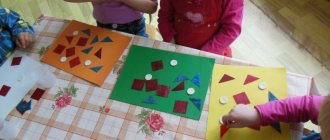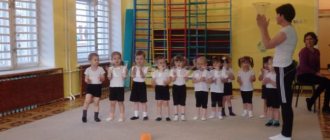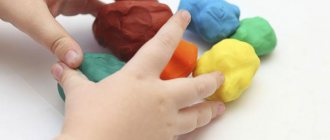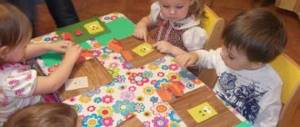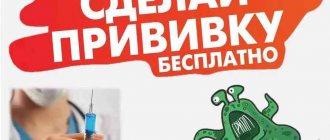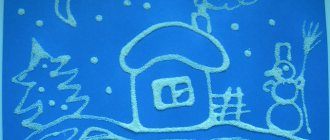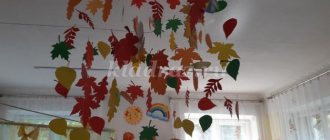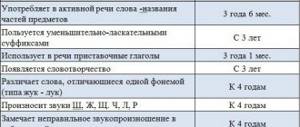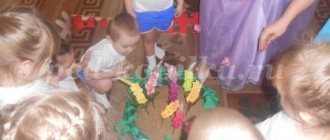Abstract of NOOD on social and communicative development for 2nd junior group
Summary of directly organized educational activities on “Social and communicative development” for the 2nd junior group “My home. My village"
Compiled by: Tanaeva N.A., teacher, 1st qualification category
Purpose : To form ideas about the native village, its streets and houses. Objectives: Educational:
- Clarify and consolidate general ideas about the native village, about houses;
variety of streets; about kindergarten. Developmental:
- develop verbal communication skills, the ability to perceive read text by ear;
— enrich vocabulary, form grammatical structure of speech, the ability to maintain a casual conversation, answering the teacher’s questions; - develop the ability to assemble a cut picture, working in pairs; Educational:
- cultivate patriotic feelings, love for the Motherland;
- continue to foster friendly relationships between children. Integration of educational areas: “Cognitive development”, “Speech development”, “Physical development”, “Artistic and aesthetic development”. Vocabulary work: Brick, wooden, iron, one-story, multi-story, Russians, Sosnovka, low, high. Material for NOD: A tape recorder and a song about Sosnovsky performed by local singer N.A. Chausova, multimedia equipment, a presentation “My Native Village”, photographs of the houses of children of the 2nd junior group, a photograph of a kindergarten, a single-story and multi-story house, a parcel, and in it game “Collect a picture”, hoops, ball, gifts for guests. Preliminary work : Targeted walks around the village, looking at the Sosnovskoye album, magazines, memorizing poems about the kindergarten and the village, conversations about the kindergarten.
GCD move:
Educator: Guys, we have guests today. Let's welcome them. Hello, golden sun! Hello, blue sky! Hello, free breeze! Hello, little forest! I live in my native land! I greet you all. Teacher: Well done! Thank you! Let's all sit on the chairs and sit quietly. Today we will talk about the Motherland, Friends. (Children sit on chairs) Educator: Guys! Every person has a homeland - the country where he was born, where he lives. What is the name of our country? Children: Russia. Educator: What are the people of our country called? (Russians) Educator: Our country is the largest in the world. There are many cities, rivers, lakes, seas, mountains and plains in it. But for every person, the place where he was born, goes to kindergarten, school, works and lives is closer and dearer. This is his small homeland. Children, do you know what name our small homeland has? Children: Sosnovskoye village. Educator: Who can tell us what they call us, the people living in Sosnovskoye? Children: Sosnovka residents. Educator: Correct. We are called Sosnovka residents. We have very beautiful places in Sosnovskoye. Look at the photo. (I turn on the slides.) The village is surrounded by a lot of forests and lakes. Our village has the most beautiful houses. The guys from our group prepared poems about our village. Listen. Sasha S.: I live in the pine region. Our village is called Sosnovskoye. There are many forests and lakes around it. There is room for everyone to walk, a huge space! Katya P.: There are a lot of berries, mushrooms and animals in the forest. Many different people go to the forest. Some people pick berries and mushrooms, others breathe fresh air and relax. Nadya S.: I love Sosnovskoe native! It's huge, big! Rich, beautiful, so dear to the heart! Educator: I suggest you go on a trip around our village. What is the most convenient way for us to travel around Sosnovsky? That's right, let's go on foot. Then stand in a circle and repeat after me. (I turn on the presentation “My native village”) Physical exercise “We are walking along the streets.” We walk through the village. (They walk in a circle.) We call what we see. (Form pairs.) Traffic lights and cars, (Turn their heads to the right.) Fairs and shops, (Turn their heads to the left.) Squares, streets, bridges. (They wave first with their right hand, then with their left.) And trees and bushes! (They raise their hands up and lower them.) Educator: So you and I walked along the streets of our village. The street in my village where I live is called Kl Street. Makarova. Do you know the name of the street where you live? Now whoever I throw the ball to will catch it and tell me what street he lives on. (I live on the street...) Game “Catch and Name” Educator: Guys, do you know what street your kindergarten is on? Children: The kindergarten is located on Krasnoarmeyskaya Street. Educator: What is the name of our kindergarten? Children: "Rowanushka." Educator: Guys, guess the riddle: “What kind of turret is there, and is there a light in the window? Let's approach this tower, And the name of the tower is... (house) At our exhibition there are photographs depicting houses for people, among them there are houses in which you live. Let's take a look at them. Who wants to show us their home and tell us what it’s like? Children talk about their home. Educator: Guys, please answer me this question: are your houses similar to each other? What is the difference? Children: The houses are not alike. They are different in height, size, color, shape, and made of different materials. Educator: That's right, guys, all houses are different. Let's compare these 2 houses. (Children look at pictures of houses: on the left is a one-story house, on the right is a multi-story house). Look at the house on the left. What can you say about its height? (I run my hand along the house from bottom to top, showing the height) Children: Low Teacher: Look at the house that stands on the right. What can you say about its height? (I run my hand along the house from bottom to top, showing the height) Children: Tall. Educator: Well done! The builders built only 1 floor in the low house. This type of house is called a one-story house. Let's all say: "One-story." Artem, repeat. Now Sasha. Nastya. And in a tall house there are many floors. This type of house is called multi-storey. Repeat please. Katya, repeat... Alina, show a one-story house on the table. How many floors does it have? Child: One. Educator: Dima, show a multi-story building on the board. How many floors does it have? Child: A lot. Educator: Let's relax a little and play the game “Building a House.” Physical education based on a poem by N.V. Nishcheva. One two three four five! (Clap their hands) Let's build and play. (They squat) We’re building a big house, high, (They stretch their arms up, stand on their toes) We’re putting up windows, we’re building a roof. (They jump on the spot) What a beautiful house - An old gnome will live in it. (Squat) (Children sit on chairs) Educator: Guys, this morning they brought us a package, and in it... this game. Let's play it. Game "Collect the picture." Educator: You have cut-out pictures on your tables. By collecting them, we can find out what is shown in the picture. (Children collect pictures). And to make it more interesting for you to collect the picture, I will play a song for you. Children collect pictures (2 people each). Educator: Have you collected it? Well done. What did you get? Children: Our kindergarten. Educator: What is a kindergarten? The guys will tell us about this. Alina B.: What is a kindergarten? The house is huge for the kids. Here they sing, play and don’t get bored without their mother. Nastya G.: I love my kindergarten. It's full - full of guys. Every day we come here and find friends for ourselves. Kirill F.: Our group is our family. We are all children: you and me. The teacher is a mother for us. She will caress you and won’t give you any offense. Educator: Well done guys, thank you. Guys, please answer me, who else works in our kindergarten? Children: Assistant teacher, cook, nurse, head teacher, senior teacher, caretaker, laundress, janitor, watchman... Educator: All these people are trying to make your life here better, more interesting. And to make it more fun for you now, we will play the game “Find your house.” Game “Find your house” (I lay out hoops of different colors on the floor. Children occupy the “house”, perform different movements. At the end they take a place in their house.) Relaxation. Educator: Guys, you liked our trip. Tell me, please, where have we been today? What is the name of our village? What are the people living in Sosnovskoye called? What is the name of our kindergarten? Guys, you were all great today. There are so many beautiful places on earth. But I will say, the most dear to me is My village, which is not marked on the map, I love it with all my soul! For me, he is more precious than all beautiful places, And everyone who is in love with him will understand me. Our journey around the village is not over yet; we will visit all the other beautiful places next time. And now, as a memory of our trip, we will give our guests our gift, and you guys will have a sweet treat made by the hands of Sosnovka craftsmen.
We recommend watching:
Summary of a game (integrated) lesson on environmental education for the 2nd junior group. Summary of GCD in the junior group on traffic rules. Summary of GCD in physical education in the second junior group. Synopsis of GCD in the junior group. OO cognitive development
Similar articles:
Lesson summary for an early age group. Vegetables: turnips and carrots
Lesson summary for an early age group. Vegetables: beets and potatoes
Lesson summary for an early age group. Fruits: lemon and orange
Lesson summary for an early age group. Cat with kittens
Summary of a lesson in an early age group on a winter theme. Hare and fox
Card index of safety conversations in the second junior group
Children 3-4 years old often become victims of accidents, so special attention should be paid to safety topics in preschool educational institutions.
For your information! It is important to convey information to parents of children about the need for prevention. At parent meetings, issue reminders and explain how best to convey information to children at this age.
Conversations are conducted with game elements, listening to theme songs, poems, viewing handouts (illustrations from books, cards, posters), as well as films and cartoons on relevant topics.
Minutes of safety in the junior group (file of topics):
- “Poisonous berries” (talk about poisonous berries, why they should not be eaten, especially pay attention to poisonous berries that are similar to edible ones).
- “Stop, dear!” (rules for crossing the roadway, rules of behavior near the road).
- “Red, yellow, green” (talk about traffic lights, what they are needed for, and what their colors mean, talk about the types of traffic lights).
- “Zebra is a striped friend. Safety at a pedestrian crossing."
- "Traveling in a car."
- “Bus, trolleybus, tram - open your doors!”
- “I’m lost” (rules of behavior in case of loss in a shopping center, at a train station or at the airport, on the street, in the forest).
- "Stranger."
- "What is height?"
- "Oh, fire!" (prohibition on playing with matches, lighters, gas burners; children's pranks with fire; basic rules for extinguishing a fire).
- "Dangerous electricity."
- "Who can help?"
Security Talk
- “I know how to make phone calls” (emergency services, relatives).
- “Be careful, ticks!”
- “How to behave with someone else’s dog” (discussion about precautions when communicating with dogs, explain how to properly establish contact if you want to communicate, how to give treats, behave when meeting an aggressive dog)?
- “Who is knocking at my house?”
- "Poisonous mushrooms."
- “Rabies, what should even a child know?”
- "Rules of behavior in a thunderstorm."
- “How to behave in strong winds?”
A child at 5 years old - what children should know and be able to do by the age of five
Plan for social and communicative development 1st junior group (2-3 years)
Work plan for the social and communicative development of children
1st junior group (2-3 years)
September
Topic: “Hello, kindergarten!”
Contribute to the creation of conditions for the successful adaptation of children to the conditions of kindergarten.
Introduce children to the premises and equipment of the group room (personal locker, crib, toys), with the rules of behavior in kindergarten (do not push, do not run up the steps, say hello and goodbye).
Form an emotionally positive attitude towards the kindergarten, teacher, and other children.
.
- Game situation “I’m getting to know our group»
- Conversation “What are we doing in the garden?”
- Game "Let's treat guests to tea."
Learn to distinguish, recognize and name children in pictures.
- Conversation “What children do on a walk”
- Didactic game “Say your friend’s name”
- Reading O. Vysotskaya “Kindergarten”.
Teach your child to know his name.
- Ball game "What's your name?"
October
Topic: “The harvest is coming from the field.”
To form primary ideas about people’s work in harvesting, to teach the rules of interaction with plants.
- Game situation “Let's harvest the harvest”
- Conversation “Why wash vegetables and fruits?”
- Looking at pictures from the series “Vegetables and fruits – healthy products”, talking about them.
To develop in children the ability to observe the work of adults and the desire to come to the rescue.
- Creative game "Cooks".
- Looking at pictures of children's work activities.
Learn to be persistent in mastering a difficult action.
- Game situation “Dress yourself”, “Button your shirt”
- Game “Assemble a pyramid, turret”
november
Topic: “Mom, Dad, I am a friendly family.”
Develop the need for communication with adults, goodwill towards them, learn to recognize a family in pictures, name family members.
- Game "Find out who it is?"
- Conversation "My family".
- The plot-role-playing game “Family”.
Raising positive actions and behavior of children towards each other.
- Game situation: “The doll is waiting for guests for dinner.”
- Reading: "Help"
Teach children to know their toys and develop a caring attitude towards them.
- Reading: A. Barto “Bunny”
- Game situation: “Ask the toy to tell about itself”
December
Topic: “Me and my body.”
Teach children to show and name the main parts of the body, a person’s face, and his actions.
- Conversation “My smart assistants”
- Reading: E. Permyak “About the nose and tongue”
- Game situation: “What I can do.”
Teach children to show and name children and their actions.
- Examination of books and illustrations (“Ladushki”, “Aibolit”, “Mice dance in a circle”)
- Outdoor games “Loaf”, “Who is good?”
Teach children to know their family members.
- Game with a ball “What are the names of me, my dad, mom, grandma, grandpa?”
January
Topic: “Me and my mood.”
Teach children to repeat after the teacher words denoting the corresponding emotional state (uncle laughs, mother is upset, doll rejoices)
- Didactic game “Remember my face”
- Game situation: “Let’s calm the doll down. Let's find out why she's crying. Let's help her"
Teach to show interest in children's facial expressions. Together with the teacher, consider the pronounced emotional states of children.
- Game situation: “Doll Katya wants to eat. What should I feed her?
- Conversation: “What gifts did Santa Claus bring?”
Recognize yourself in the mirror, in a photo.
- Game “Tell me from the photo”
- Game with a mirror “Who is this?”
February
Topic: “I am a man.”
Show and name in pictures actions in which parents care for their children.
- Lesson-sketch “Loving parents”
- Game situation “How to dress Mashenka for a visit (for a holiday, for a walk)”
Teach children to pay attention to the good actions and actions of friends in the group. To develop in children the ability to mentally reproduce an image of someone like themselves.
- Creative game “Guess who it is?”
- Reading: V. Mayakovsky “What is good and what is bad” (excerpt)
Learn to answer questions about family members.
- Game situation “What is mom doing? Where is Dad? Tell me about your brother, sister"
March
Topic: “My home.”
Learn to distinguish and name individual actions of adults in which a kind attitude towards children is manifested (feeding, dressing, caressing).
- Game situation “Let’s sew a new dress for the doll”
- Game situation “Mashenka wants to swim”
- Reading S. Kaputekyan “Who will finish drinking sooner”
Teach children to recognize their peers and call them by name.
- Conversation “Recognize yourself and your friends in the photo”
- Word game “Say kindly”
- Game situation “Let’s arrange the furniture in the doll’s room”
Teach children to recognize the house in which they live.
- Game situation: “Which house in the picture is similar to the one where you live?”
April
Topic: "Security".
Develop basic understanding of traffic rules.
Conversation “Our friend the traffic light”
- Game situation “Let's take the dolls for a ride in the car.”
- Role-playing game “I am a driver.”
To develop in children the ability to respond to the general emotional state. Teach children to look at pictures, name the pronounced emotional state of a peer (laughs, rejoices, cries).
- Game situation “Guess why the boy is crying?”
- Following the example of the teacher, show sympathy for your peer (take pity, take the hand, offer help).
Feel satisfaction from the approval of an adult and strive to repeat the positive action yourself.
- Game “Calm the doll”, “Help the adult”
- Reading nursery rhymes “Caressing a Child”, “When a Child Cries”
May
Topic: “Here we are, how big we have become».
To form basic ideas about the growth and development of children.
Expand ideas about the change in social status (growing up) of a child in connection with attending kindergarten.
- Reading I. Muraveyk “I myself.”
- Conversation “We are already big!”
- Game "Locomotive".
Teach children, following the example of the teacher, to show a kind attitude towards toys and animals (do not offend dolls, do not frighten animals).
- Game situation “The doll is tired, we are preparing a bed for her”
- Examination of the illustrations by E. Permyak “How Masha became big.”
Teach children to talk about themselves with a positive feeling: “I am good,” “Tolya is good.”
- Reading: “Hostess”, “Boat”
Morning conversations with children of the younger group
Conversation in the morning plays a very important role for preschool children, especially in younger groups. Morning conversation brings the children's team together.
Note! The beginning of the day sets a positive emotional atmosphere in the group.
A sample list of topics for morning conversations:
- “My way to kindergarten” (what I saw that morning, what I remember most of all, what we talked about with the person who took me to kindergarten).
- “Proper nutrition and junk food.”
- "Table manners."
- “Pets” (list the ones he knows, tell about yours, if you have them, if not, what animals you dream about).
- “Vegetables and fruits” (list vegetables and fruits, what can be prepared from them, how they grow).
- “Garden and vegetable garden” (tell why you need a garden or vegetable garden, about your own, if you have one, what grows in it).
- “My favorite poem” (name the author of your favorite poem, if possible, recite the poem by heart, tell what the poem is about and why you like it).
- “My mom” (tell about your mom, what she does, what she loves, how she spends time with her; is it necessary to communicate with her mom).
- “My favorite toy” (describe your toy, its name, how it appeared, some story associated with it).
- “Wild animals” (list what they know and what they eat).
- “Birds” (name different birds, describe what they look like, guess what they eat).
- “Numbers” (count from 1 to 10 and back, talk about addition and subtraction, about tens, hundreds).
- “Cleanliness is the key to health” (why it is important to keep the body and home clean, talk about washing the body, washing clothes, wet cleaning).
- “Morning exercises” (explain the benefits of morning exercises, the impact on health, ask if there are those who do it or those who have family members who do it, come up with exercises for morning exercises together).
- “Seasons” (list summer, autumn, winter and spring, ask to talk about the features of each season, explain that a year consists of seasons, read a poem about each season and look at the illustrations).
Conversation about the road to kindergarten
- “Days of the week” (name the days of the week in order, talk about the beginning, middle and end, listen to a song about the days of the week).
- “Time: hours, minutes, seconds” (study mechanical and electronic watches, listen to poems about time, analyze information about hours, minutes and seconds).
- “Months of the year” (list each month in order; clarify which months belong to which season, listen to the fairy tale “Twelve Months”, name in which month, what holidays, for example, December - New Year, February - Defender of the Fatherland Day, January - Christmas).
- “My friend” (ask to tell what everyone understands by the concept of “friend”, what is the most important thing in him, is there a friend, if so, then why is he valued) Physical education session to the song “It’s fun to walk together.” Assignment: draw yourself and a friend.
- “Music” (tell that music can be classical and popular, funny and sad, listen to different compositions and discuss them with the children). Assignment: depict emotions from music.
- "Amazing space."
- "My future profession."
Experimental activities in the middle group
